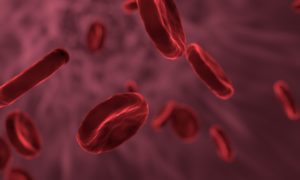Cold Agglutinin Disease (CAD)
What is cold agglutinin disease (CAD)?
Cold agglutinin disease (CAD) is a rare type of autoimmune disorder in which the immune system mistakenly attacks and destroys its own red blood cells. Red blood cells are cells that carry oxygen through the body.
When a CAD patient’s blood is exposed to cold temperatures (about 32 degrees to 50 degrees F), antibodies (cold agglutinins) that normally attack invaders like bacteria suddenly attach themselves to red blood cells and bind them into clumps. This causes red blood cells to be destroyed prematurely, which leads to symptoms.
CAD most often affects middle aged adults and is estimated to affect 1 in 80,000 people. It may affect females slightly more than males.
What are the symptoms of cold agglutinin disease?
Since symptoms of CAD are triggered by cold temperatures, they are usually worse during winter months. They include:
- Hemolytic anemia (destruction of red blood cells)
- Tiredness
- Headaches
- Dizziness
- Ringing in the ears
- Pale skin
- Yellowing of eyes and skin
- Cold, hurting, and/or blue colored hands and feet
- Pain in chest, back, and/or legs
- Dark urine
- Vomiting
- Diarrhea
- Heart problems like enlarged heart, irregular heartbeat, or heart failure
- Discolored skin
What causes cold agglutinin disease?
CAD can be primary (a disease that occurs spontaneously) or secondary (a disease that happens because of an earlier illness). The cause of primary CAD is currently unknown, while secondary CAD can be the result of other autoimmune diseases, infections, or some cancers. The most common cause of secondary CAS is mycoplasma pneumonia.
How is cold agglutinin disease diagnosed?
CAD is diagnosed using the following procedures:
- Blood tests for hemolytic anemia
- Complete blood count showing abnormal clumping of red blood cells
- Physical exam looking for enlarged spleen or liver
- Antiglobulin test (Coombs test)
What are the treatments for cold agglutinin disease?
Treatment for CAD depends on the severity of the case, the symptoms each individual has, and the underlying cause of the disease. It includes, but is not limited to:
- In the case of secondary CAD, treatment for the underlying condition that led to CAD
- Reducing exposure to the cold
- Prescription medications
- Plasmapheresis
Patients with only mild anemia may not need any treatment.
Where can I find out more about cold agglutinin disease?
Cold Agglutinin Disease (CAD) Articles

2024 Proof-of-Concept Trial Will Evaluate DNTH103 for Cold Agglutinin Disease (CAD)

A New Program Helps with Medical Costs Associated with Cold Agglutinin Disease (CAD)


Learn About Cold Agglutinin Disease and How to Advocate for Patients





